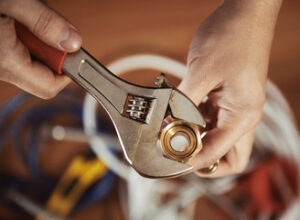Plumbing involves the use of pipes and plumbing fixtures to transport fluids. There are many different types of plumbing systems, including sewerage, water supply, and drainage. The main elements of plumbing systems are pipes, valves, tanks, and plumbing fixtures. Visit the website to learn how to maintain them to ensure proper functioning. Copper tubing is often used for home plumbing systems. If you’re looking to upgrade your plumbing system, learn how to select copper tubing. After you’ve mastered the basics of plumbing, you can move on to more complex installations.

There are several institutions responsible for the provision of water in different settings. These institutions can be divided into policy, regulation, and service entities. The following is a brief overview of the roles and responsibilities of these organizations. Water supply systems serve as the lifeline of modern industrialized society. However, a variety of risks can occur to water supplies, making them a critical aspect of any plumbing design. Water supply can also be a source of environmental contamination, including pathogens and chemical contaminants.
The cost of supplying water is divided into fixed and variable costs, which depend on the volume of water consumed. In developed countries, the full cost of supplying water is about US$0.11 per cubic meter. In developing countries, the cost of water is considerably lower. Water tariffs are billed to consumers, while the remaining costs are financed through direct and indirect government subsidies. Water is a vital service for the general public.
Sources of drinking water include groundwater, lakes, reservoirs, rivers, and canals. Various treatment methods are used to improve the quality of drinking water. Water mains and storage tanks transport treated water to end users. Eventually, the water is returned to the main line. When this happens, it is pumped into a distribution system. In the case of a municipal system, the water is distributed to end users through water mains.
Drainage in plumbing involves the removal of wastewater from home using gravity. Waste water goes through a system of pipes that join up with the main sewer, usually under the road. Plumbing is responsible for bringing fresh water into the house and draining waste water away. When drainage is not properly installed, water can pool in your home or become contaminated and cause a host of other problems. Poor drainage can lead to mold and mildew growth, overflowing drains, and excessive water in your garden or yard.
Plumbers call this wastewater ‘bad water. This water needs to be drained from a place for some reason. It may be in a fruit bowl or a swimming pool, for example. In such cases, the water flows through a drain and into a recirculation pumping machine. Drains are important for both preventing entrapment in pipes and reducing the risk of flooding and contamination of streams and rivers.
Drainage in plumbing refers to the pipes and fixtures within a building. The plumbing system is responsible for the water supply to kitchen and bathroom outlets, and the drainage system is responsible for the removal of human wastes through a series of pipes. Pipes used in a drainage system can be made from copper, GI, HDPE, and CPVC. The plastic pipes are especially economical and lightweight. You can use a drain tracing tool to visualize your drainage system.
The types of water supply pipes are categorized by their wall thickness. Water pipes typically schedule 40, which is the most common. They differ in their wall thickness depending on the operating pressure and other factors. A thicker pipe generally means a higher initial cost, but it is also more durable and has higher pressure tolerances. Pipe wall thickness is indicated by various schedules and the Standard Dimension Ratio (SDR), a ratio of the pipe diameter to wall thickness.
Another type of pipe is PVC. PVC is a thermoplastic polymer made from vinyl and plastic. PVC pipes are available in several thicknesses, and some are more flexible than others. PVC is also available in different sizes and configurations. The main advantage of PVC pipe is that it does not corrode, and it will last a very long time. Compared to metal pipes, PVC can handle high water pressures.
Copper pipe is another type of pipe. It is widely used today and is common around fixtures in new and old homes alike. Copper pipes do not affect the quality of water and can be bent easily. It is an excellent choice for plumbing systems, as it will not impact the water quality of the building. Copper is also a common material for water supply pipes, and it is not corroded or rusted. A copper pipe is not considered hot water.
